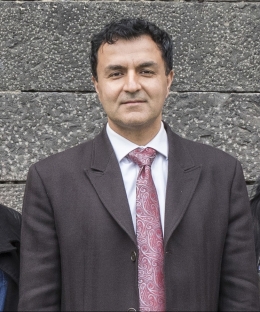Chemical engineering researchers from UNSW and RMIT have discovered a revolutionary way to bring down costs and save energy in the manufacture of accelerometers which are used to detect motion in devices such as mobile phones.
The research team, which was led by UNSW Chemical Engineering Professor Kourosh Kalantar-zadeh, found a way to ‘print’ large-scale sheets of two-dimensional piezoelectric material, enabling it to be placed directly onto silicon chips.
Piezoelectric materials convert applied mechanical force or strain into electrical energy. They form the basis of sound and pressure sensors as well as embedded devices that are powered by vibration or bending. One domestic application is the ‘piezo’ lighter used for gas BBQs and stovetops.

Professor Kourosh Kalantar-zadeh.
Piezoelectric materials can also take advantage of the small voltages generated by tiny mechanical displacement, vibration, bending or stretching to power miniaturised devices.
Until now, piezoelectric material has been manufactured in large chucks of crystals, making it impossible to integrate with silicon chips or use in large-scale surface manufacturing.
This limitation meant that piezo accelerometer devices – such as vehicle air bag triggers or the devices that recognise orientation changes in mobile phones – have required separate, expensive components to be embedded onto silicon substrates, adding significant manufacturing costs.
The new 2D printing technique opens the way for gallium phosphate (GaPO4), an important piezoelectric material commonly used in pressure sensors and microgram-scale mass measurement, to be placed onto silicon substrates – or any other surface – on a large scale using low-cost, low-temperature manufacturing processes.
Professor Kalantar-zadeh, who is an ARC Australian Laureate Fellow, began the research while Professor of Electronic Engineering at RMIT University. He said the work followed on from other wins in the laboratory.
“As so often in science, this work builds on past successes,” Professor Kalantar-zadeh said. “We adopted the liquid-metal material deposition technique we developed recently to create 2D films of GaPO4 through an easy, two-step process.”
The researchers believe this simple, industry-compatible procedure to print large surface area 2D piezoelectric films onto any substrate offers tremendous opportunities for the development of piezo-sensors and energy harvesters.
Dr Torben Daenke is the now the lead collaborator at RMIT working on this project.



